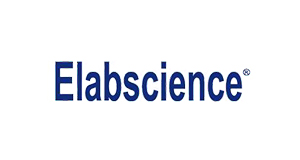Recombinant Porcine S100A12 protein (His tag)
Recombinant Porcine S100A12 protein (His tag)
SKU
ELSPDEP100005-100
Packaging Unit
100 µg
Manufacturer
Elabscience Biotechnology
Availability:
loading...
Price is loading...
Abbreviation: S100A12
Target Synonym: Protein S100-A12;Calcium-binding protein in amniotic fluid 1;Calgranulin-C;Extracellular newly identified RAGE-binding protein;Migration inhibitory factor-related protein 6;S100 calcium-binding protein A12;Calcitermin;S100A12;CGRP;MRP-6;EN-RAGE
Target Species: Porcine
Expression Host: E.coli
Fusion Tag: N-His
UNIProt ID: P80310
Background: S100 protein is a family of low molecular weight protein found in vertebrates characterized by two EF-hand calcium-binding motifs. There are at least 21 different S100 proteins, and the name is derived from the fact that the protein is 100% soluble in ammonium sulfate at neutral pH. Most S100 proteins are disulfide-linked homodimer, and is normally present in cells derived from the neural crest, chondrocytes, macrophages, dendritic cells, etc. S100 proteins have been implicated in a variety of intracellular and extracellular functions. They are involved in regulation of protein phosphorylation, transcription factors, the dynamics of cytoskeleton constituents, enzyme activities, cell growth and differentiation, and the inflammatory response. Protein S100-A12, also known as S100 calcium-binding protein A12, Calcium-binding protein in amniotic fluid 1, Calgranulin-C, and S100A12, is a member of the S-101 family. Like the majority of S100 proteins, S100A12 is a dimer, with the interface between the two subunits being composed mostly of hydrophobic residues. The fold of S100A12 is similar to the other known crystal and solution structures of S100 proteins, except for the linker region between the two EF-hand motifs. S100A12 plays an important role in the inflammatory response.
Sequence: Thr 2-Glu 92
Purity: > 95 % as determined by reducing SDS-PAGE.
Formulation: Lyophilized from sterile PBS, pH 7.4.
Normally 5 % - 8 % trehalose, mannitol and 0.01% Tween80 are added as protectants before lyophilization.
Please refer to the specific buffer information in the printed manual.
Endotoxin: Please contact us for more information.
Target Synonym: Protein S100-A12;Calcium-binding protein in amniotic fluid 1;Calgranulin-C;Extracellular newly identified RAGE-binding protein;Migration inhibitory factor-related protein 6;S100 calcium-binding protein A12;Calcitermin;S100A12;CGRP;MRP-6;EN-RAGE
Target Species: Porcine
Expression Host: E.coli
Fusion Tag: N-His
UNIProt ID: P80310
Background: S100 protein is a family of low molecular weight protein found in vertebrates characterized by two EF-hand calcium-binding motifs. There are at least 21 different S100 proteins, and the name is derived from the fact that the protein is 100% soluble in ammonium sulfate at neutral pH. Most S100 proteins are disulfide-linked homodimer, and is normally present in cells derived from the neural crest, chondrocytes, macrophages, dendritic cells, etc. S100 proteins have been implicated in a variety of intracellular and extracellular functions. They are involved in regulation of protein phosphorylation, transcription factors, the dynamics of cytoskeleton constituents, enzyme activities, cell growth and differentiation, and the inflammatory response. Protein S100-A12, also known as S100 calcium-binding protein A12, Calcium-binding protein in amniotic fluid 1, Calgranulin-C, and S100A12, is a member of the S-101 family. Like the majority of S100 proteins, S100A12 is a dimer, with the interface between the two subunits being composed mostly of hydrophobic residues. The fold of S100A12 is similar to the other known crystal and solution structures of S100 proteins, except for the linker region between the two EF-hand motifs. S100A12 plays an important role in the inflammatory response.
Sequence: Thr 2-Glu 92
Purity: > 95 % as determined by reducing SDS-PAGE.
Formulation: Lyophilized from sterile PBS, pH 7.4.
Normally 5 % - 8 % trehalose, mannitol and 0.01% Tween80 are added as protectants before lyophilization.
Please refer to the specific buffer information in the printed manual.
Endotoxin: Please contact us for more information.

 Deutsch
Deutsch










